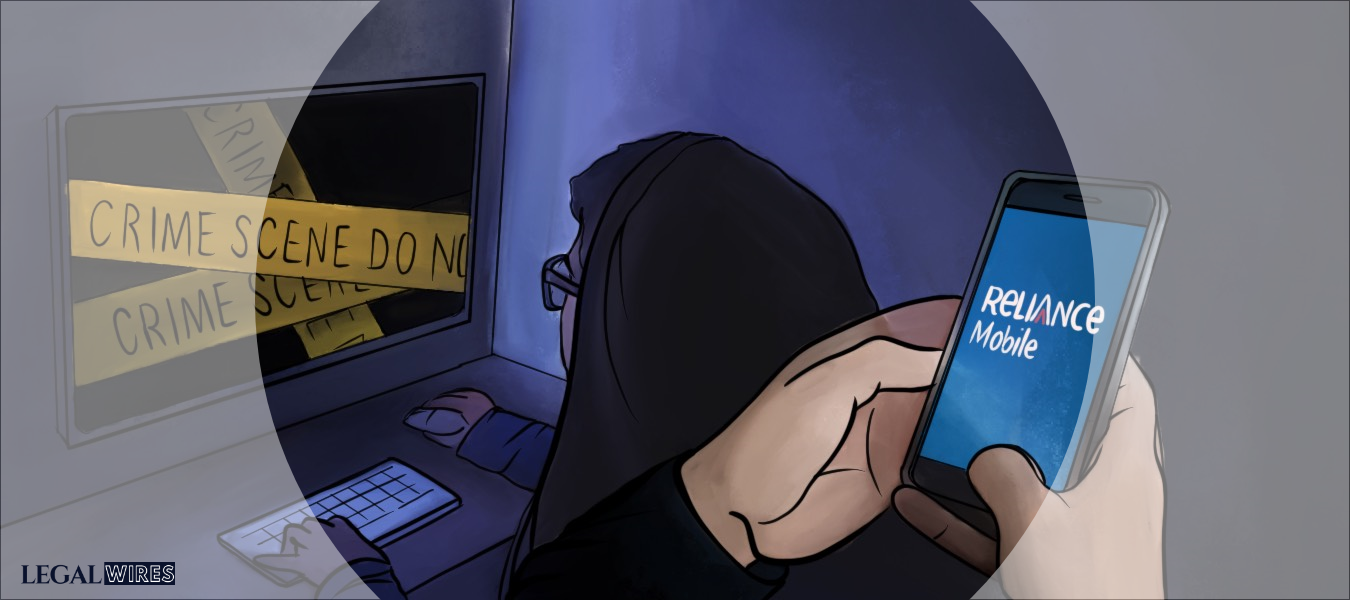The High Court dismissed the petition and had ordered the investigating report to be submitted within 3 months from the date of receipt of this order to the Metropolitan Magistrate.

Citations: 2006 (1) ALD Cri 96, 2005 CrLJ 4314, 2005 Indlaw AP 500
Date of judgement: 29th July, 2005
Bench: V Rao
Facts:
Two petitions were filed by two different persons who were seeking the relief of quashing F. I. R. No. 20 of 2003 of Criminal Investigation Department (C. I. D.) Police, Hyderabad, registered under Sections 409, 420 and 120B of Indian Penal Code, 1860 (herein IPC), Sec 65 of the Information Technology Act, 2000 (herein IT Act) and Sec 63 of the Copyright Act, 1957, under Section (herein Sec) 482 of the Code of Criminal Procedure (herein CrPC), 1973.
The complaint was filed by the Head of Sales and Marketing wing of M/s Reliance Infocomm Ltd, Hyderabad (herein respondent 2). Telephone services called as ‘Reliance India Mobile’ (RIM) was launched by Reliance Infocomm, later modified to ‘POBF’. In the said scheme the subscriber would get a digital handset worth Rs. 10.500/- as well as a service bundle for 3 years.
It was alleged that the subscribers of respondent 2 were attracted by other service providers through phone calls, impressing them with other better tariff plans and an option to shift the service provider. After the subscribers agreed to shift the service and keep the headset, he/she is asked to meet the business associate of the rival providers. Then they hacked the Electronic Serial Number (ESN) by reprogramming it. Since the Mobile Identification Number (MIN) of Reliance handsets were irreversibly integrated with ESN, reprogramming the device would be authenticated by the petitioners’ provider.
Two devices, namely – a Samsung N191 and LG-2030 were seized by the investigator and it was unveiled that the Petitioners’ (staff members of TATA Indicom) had tampered with the devices through dubious means to highjack the customers of the respondent 2.
Issues:
- Whether the manipulation of ESN programmed into the cell phone would amount to altering of source code under section 65 of IT Act, 2000 or not?
- Whether a telephone handset is a computer under section 2(1)(i) of IT Act, 2000 or not?
Judgement:
The High Court dismissed the petition and had ordered the investigating report to be submitted within 3 months from the date of receipt of this order to the Metropolitan Magistrate. The court stated that the computer source code should be used as verification when a phone operator has handled a computer source code. Therefore, the respondent may use the source code of the machine as evidence. The court held that, until and unless the police complaint is shown to be illegal or would result in the miscarriage of justice, ordinarily the criminal investigation cannot be quashed.
Key law points:
1. Whether a telephone handset is a computer under section 2(1)(i) of IT Act, 2000 or not?
Yes, it is covered.
In the present case, Sec 2 clause (1), sub-clauses (i), and (j)[1] define a computer system, computer, and computer network, respectively. A reading of these clauses would show that any electronic, magnetic or optical device that is used to store data collected through satellite, microwave or other communication media and devices that are programmable and capable of processing information by manipulating electrical, magnetic or optical impulses is a computer that can be used as a control machine on a computer network. Thus, telephone handsets will be covered as specified under Sec 2(1) (i) of the IT Act.
2. Whether the manipulation of ESN programmed into the cell phone would amount to altering of source code under section 65 of IT Act, 2000 or not?
Yes, it will
In order for a computer to work in a specified manner, it has to be instructed accordingly. As per Sec 65[2], computer source code refers to a list of programmes; computer commands; design and layout and programme analysis of computer resource in any form. This source code is closely guarded by the computer companies and law has started recognizing copyright in the source code developed by a programmer. If the source code is copied, it would certainly violate the copyright of the developer.
Going by the definition of source code, ESN of Samsung N191 model cell phone handset or ESN of LG-2030 model cell phone handset were exclusively being used by the respondent 2 as well as SID of respondent 2 come within the definition of computer source code. In order to obtain SID from the licensor, every cell phone’s operator is required. Whereas ENS is a permanent part of the phone, only when you buy a service contract, MIN and SID are configured on the phone. When anyone manipulates and changes ESN, other service providers such as TATA Indicom will make the exclusively used handsets available.
Hence prima facie, when the ESN has changed the crime under Sec 65 of IT Act, is attracted by the fact that every service provider such as Respondent No. 2 has to maintain its own SID code and also gives an instrument used to make use of the services offered a customer unique number. The argument that because there is no statute requiring the preservation of a computer source code, infringement cannot be made is without merit. Furthermore, it is a matter of evidence that a mobile phone operator retains computer source code. In this present dispute, it is respondent 2 who maintains the source code. So, therefore, allegations made against the petitioners under the said Sec. are valid.


